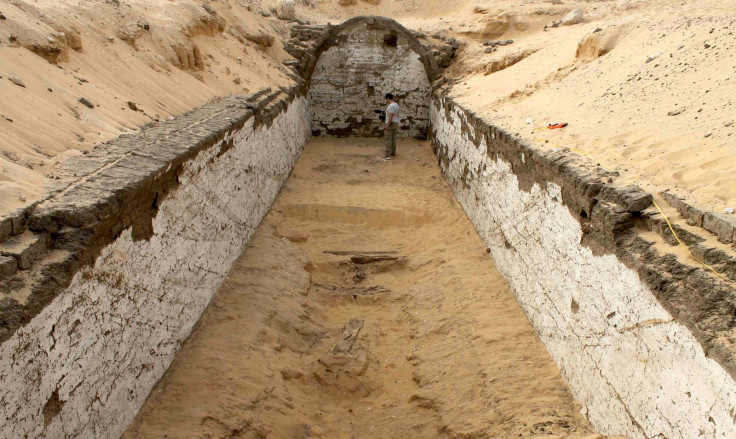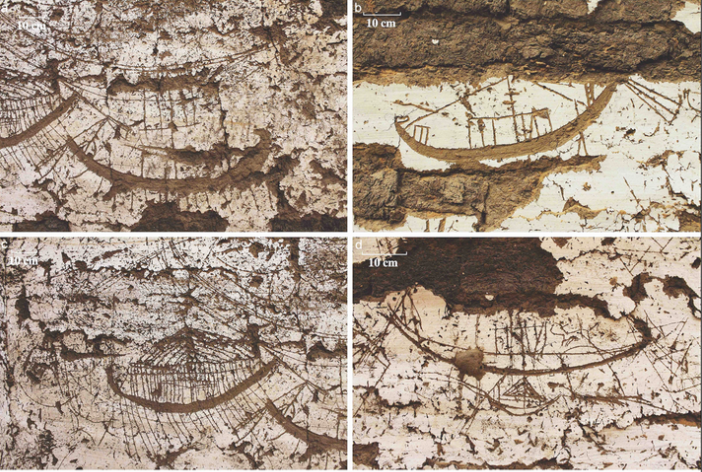Ancient boat burial linked to Pharaoh Senwosret III unearthed in Egypt
Alongside boat burial remains, researchers identified remarkable images of Egyptian watercraft on the walls.
The remains of a boat burial associated with the royal funerary complex of Pharaoh Senwosret III – also known as Pharaoh Senusret III – have been unearthed at one of Egypt's oldest cities, Abydos. On the interior walls of the building, researchers have also come across an extensive tableau representing 120 drawings of Pharaonic watercraft.
The ancient Egyptian practice of burying boats close to royal tombs is now well recognised by archaeologists. The most significant evidence of this comes from dismantled vessel remains found in the vicinity of the pyramid of Khufu at Giza. Boats were important for Pharaohs to perform their daily functions in their lifetime but also had symbolic relevance to them, for their existence after death.
However, the varying degrees of preservation of boat burial remains throughout Egypt and the fact many royal tombs have not yet been fully excavated mean archaeological records of this practice are far from being complete.
Five wooden planks
The findings of the latest boat remains, alongside remarkable boat images are described in the International Journal of Nautical Archaeology. They are the results of two years of excavations at South Abydos, between 2014 and 2016, close to the mortuary complex of the 12th Dynasty King Senwosret III.
The team from the Penn Museum, University of Pennsylvania, has fully excavated a subterranean boat building, located 65 metres east of the front of the tomb enclosure of Senwosret III. Inside it, they exposed a group of five wooden planks.

Although these planks are badly preserved, they appear likely to be remnants of an original boat from Senwosret III's era. The author of the study, Dr Josef Wegner – who is also the Associate Curator of the Museum's Egyptian Section – explains that it would have been an almost 20m-long boat and that it was buried intact, but later dismantled for reuse of the wood.
But it's the 120 incised images of Pharaonic watercraft on the walls which makes the find particularly significant. The artwork covers a length of 25m on the side and end walls, and does not compose a unified scene such as the one that can be found in the mortuary imagery that is present in tombs. It is clear that the boats were not created by a single individual but by a large group to commemorate their connection with the watercraft.
Mysteries to solve
After completing the excavation of the 'boat building', a number of interrogations remain. Archaeologists are not sure for example if these images are meant to be generic representations of Nile watercraft or if they evoke a particular class of vessel.

More important perhaps, it is not entirely clear if the images are contemporary with the installation of the boat burial. It is possible that they were created by later visitors who had succeeded in entering the building – if that is the case, then the images could potentially be seen as offerings linked with the presence of the royal funerary boat and the royal tomb nearby.
However the indications are strongly in favour of their being drawn contemporary with the installation of the royal boat burial. "The deep, sanded context of the building makes later graffiti possible, but less likely. Additionally, although there's a fair bit of variation in size and complexity of the images, there is an overall cohesiveness to the boat drawings. The iconography suggests most or all are meant to depict an actual vessel or vessels used in the royal funerary procession", Wegner told IBTimes UK.
Some of these questions will potentially be answered by further work at Abydos, where experts hope to find additional boat burials.
© Copyright IBTimes 2025. All rights reserved.






















